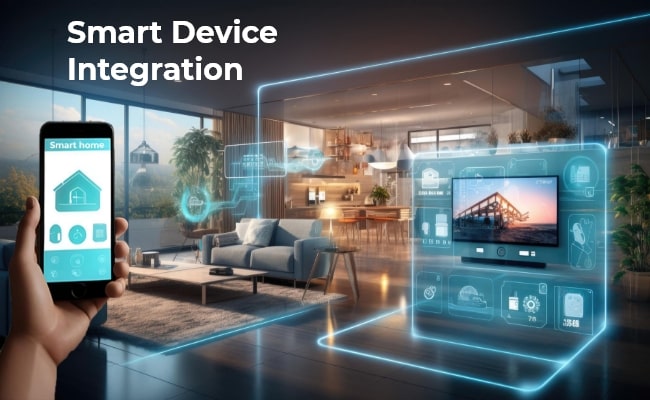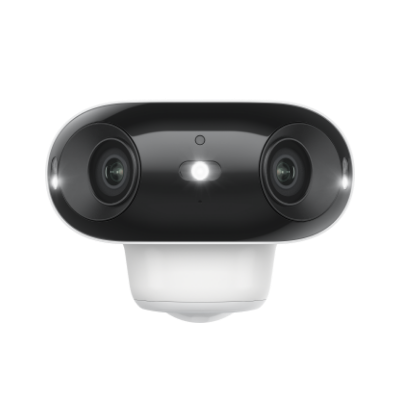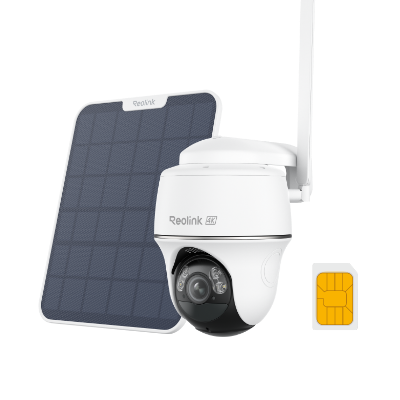Smart Device Integration: Definition and How-to Guide

Smart device integration is a rapidly growing field that has transformed the way we interact with our homes, vehicles, and daily lives. As technology continues to advance, the seamless connectivity and control of various devices have become increasingly important.
In this article, we will look into smart device integration meaning, explore common devices used in smart home and vehicle systems, and provide a comprehensive guide on how to integrate these devices.
What is Smart Device Integration?
Smart device integration refers to the process of connecting and coordinating multiple electronic devices, such as smartphones, tablets, home appliances, and vehicle systems, to work together in a cohesive and efficient manner.
This integration allows users to control, monitor, and automate various functions through a centralized interface, usually a smartphone app or a dedicated control panel.
The primary goal of smart device integration is to enhance convenience, energy efficiency, and overall user experience. By interconnecting different devices and systems, users can remotely control their home's temperature, lighting, security, and even their vehicle's features, all from the palm of their hand.
Common Devices for Smart Home Integration
After knowing what does smart device integration mean, we should look into the common devices for integration. Smart home integration encompasses a wide range of devices that can be seamlessly connected and controlled through a central platform. Some of the most common devices found in a smart home integration system include:
Voice Assistant
Voice assistants, such as Amazon Alexa, Google Assistant, and Apple's Siri, have become increasingly popular in smart home integration. These AI-powered devices allow users to control various home functions, such as turning on lights, adjusting the thermostat, or even playing music, with simple voice commands.
Smart Thermostats
Smart thermostats are intelligent devices that learn your heating and cooling preferences, and automatically adjust the temperature based on your schedule and habits. They can be integrated with other smart home systems to provide a more comprehensive home automation experience.
Smart Lighting
Smart lighting systems, which include connected light bulbs, lamps, and switches, can be controlled through a smartphone app or voice commands. These systems allow users to adjust the brightness, color, and scheduling of their home's lighting, creating customized and energy-efficient lighting solutions.
Smart Security Devices
Smart security devices, such as security cameras, video doorbells, and alarm systems, can be integrated into a smart home setup. These devices allow users to monitor their homes remotely, receive alerts, and even control access to their property through their smartphones or voice commands.
Smart Plugs
Smart plugs are Wi-Fi-enabled devices that can turn regular electrical outlets into smart, connected outlets. These plugs allow users to control and monitor the power usage of various appliances, lamps, and other devices through their smartphones or voice assistants.
How to Integrate Smart Home Devices: Platforms & Protocols
Integrating smart home devices into a cohesive system requires the use of various platforms and protocols. Some of the most common ones include:
- Amazon Alexa: Amazon's voice-controlled assistant that can control a wide range of smart home devices.
- Google Assistant: Google's AI-powered assistant that can be used to control compatible smart home devices.
- Apple HomeKit: Apple's platform for integrating and controlling smart home devices, often through Siri voice commands.
- Samsung SmartThings: A popular smart home platform that allows users to connect and control various devices through a single app.
- Zigbee and Z-Wave: Wireless protocols used by many smart home devices to communicate with each other and with a central hub.
- Matter: A new, open-source standard that aims to improve interoperability between smart home devices from different manufacturers.
These platforms and protocols work together to create a seamless integration experience, allowing users to control and monitor their smart home devices from a single interface.
Features of Smart Device Integration in Cars
Smart device integration in cars has become increasingly common, offering a range of features that enhance the driving experience. Some key features of smart vehicle system integration include:
- Bluetooth connectivity: This allows users to connect their smartphones to their vehicle's infotainment system, enabling hands-free calling, music streaming, and more.
- Voice recognition: Many vehicles now feature voice control capabilities, allowing drivers to issue commands to control various in-car functions, such as climate, navigation, and media playback.
- Smartphone mirroring: If you are wondering what is smart device integration in a car, you should know that technologies like Apple CarPlay and Android Auto allow users to mirror their smartphone's display on the vehicle's infotainment system, providing access to apps, maps, and other smartphone-based features.
These features of smart device integration in cars help to improve safety, convenience, and the overall driving experience.
Best Security Camera for Smart Device Integrations
When it comes to smart device integrations, security cameras play a crucial role in providing enhanced home monitoring and security.
Wi-Fi Security Camera for Smart Integration
If you're looking for wireless security cameras with smart connectivity, don't miss the latest Argus 4 Pro. This dual-lens camera offers a 180-degree field of view and captures 4K footage. Enjoy full-color night vision without using visible spotlights. The camera is compatible with the Google Home ecosystem and can be connected to your Home Assistant for seamless smart device control and management.
4k 180° Wire-free Color Night Vision Camera
4K UHD 180° Blindspot-free View; Color Vision Day and Night; 30% More Battery Life; Dual-band Wi-Fi 6; Smart detection.
For users requiring full-color night vision without apparent spotlights, the Reolink Argus 4 Pro is the best option. Alternatively, if you desire an affordable choice that still delivers effective performance, the Argus 4 standard version is worth considering.
4k 180° Blindspot-free Wi-Fi 6 Camera
4K UHD 180° Blindspot-free View; Dual-band Wi-Fi 6; Smart detection; Easy Installation Anywhere
4G Cellular Camera with Smart Connectivity
The Reolink Go PT Ultra is a smart 4K 8MP wireless 4G LTE security camera that offers a range of features perfect for seamless integration with smart home systems. With its 4K Ultra HD resolution, the camera captures detailed and clear footage, ensuring you can monitor your home with high-quality visuals.
4K 8MP Wire-Free 4G LTE PT Battery Camera
4K 8MP; Smart Detection; 355° Pan & 140° Tilt; Battery/Solar Powered; Color Night Vision; Smart Real-Time Alert.
FAQs
What could smart devices be integrated with?
Smart devices can be integrated with a wide variety of home appliances, lighting systems, HVAC systems, security devices, entertainment systems, and even vehicles. The goal of smart device integration is to create a connected ecosystem where different devices can communicate and work together, providing increased convenience, efficiency, and control for the user.
Does smart device integration mean apple carplay?
No, smart device integration and Apple CarPlay are not the same thing. Smart device integration is a broader term that refers to the ability to connect and control various smart devices, such as home appliances, security systems, and more, through a central platform or interface.
Apple CarPlay, on the other hand, is a specific feature that allows users to integrate their iPhone with their vehicle's infotainment system. CarPlay enables users to access certain iPhone apps, such as maps, music, and messaging, directly on the vehicle's display and using voice commands.
What does smartphone integration mean?
Smartphone integration refers to the ability to seamlessly connect and control a smartphone with other devices, systems, or vehicles. This integration allows users to access and manipulate various functions and information from their smartphone through a different interface, such as a vehicle's infotainment system or a smart home's control panel.
Conclusion
Smart device integration has become an integral part of modern living, revolutionizing the way we interact with our homes, vehicles, and daily routines. By connecting a wide range of devices and systems, users can enjoy enhanced convenience, energy efficiency, and overall control over their environments.
We encourage you to explore the world of smart device integration and discover how it can enhance your daily experiences. Share your thoughts and experiences with us, as we collectively navigate the exciting advancements in this rapidly growing field.
Search
Subscribe for the Latest Updates
Security insights & offers right into your inbox



